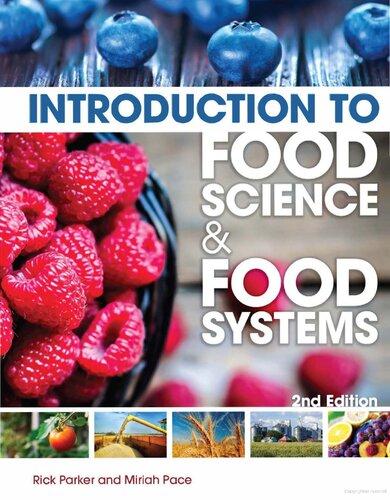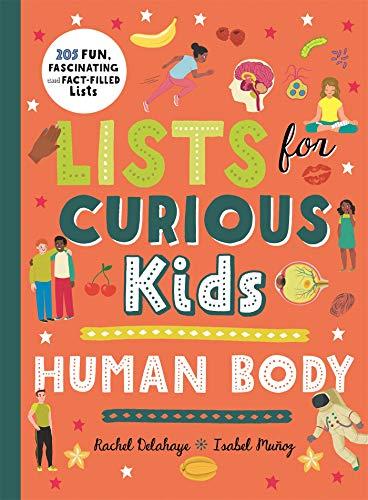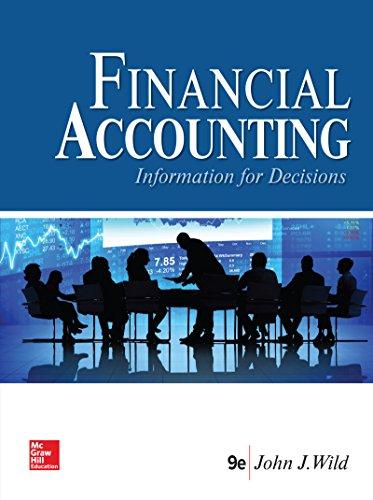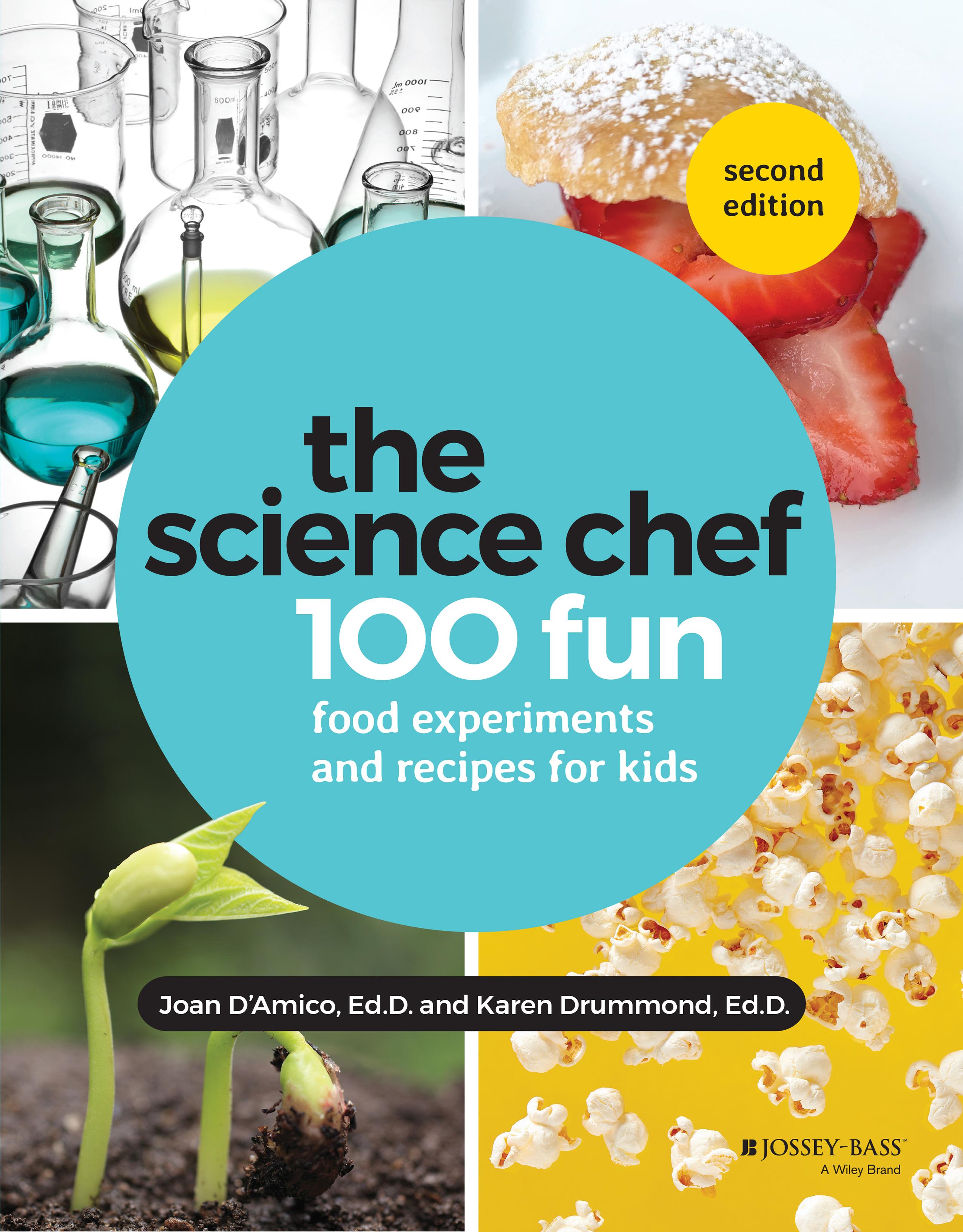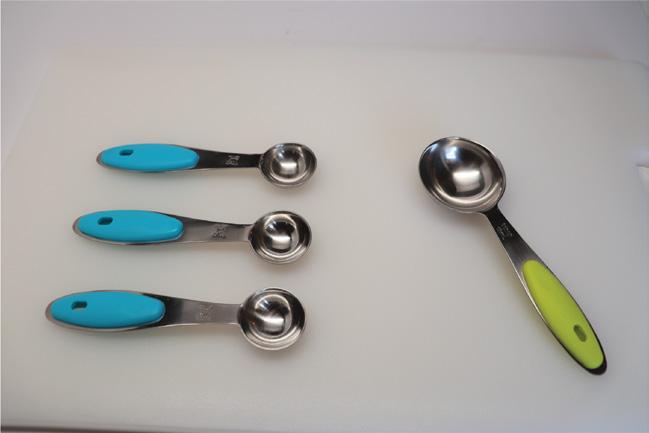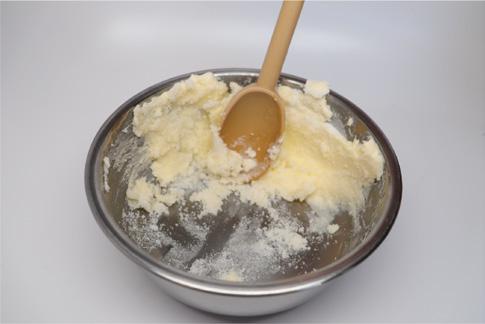TheScienceChef:100FunFoodExperimentsand RecipesforKids2ndEditionJoanD'Amico
https://ebookmass.com/product/the-science-chef-100-fun-foodexperiments-and-recipes-for-kids-2nd-edition-joan-damico/
Instant digital products (PDF, ePub, MOBI) ready for you
Download now and discover formats that fit your needs...
Pinch
of Nom Comfort Food: 100 Slimming, Satisfying Recipes Kay Featherstone
https://ebookmass.com/product/pinch-of-nom-comfort-food-100-slimmingsatisfying-recipes-kay-featherstone/
ebookmass.com
Introduction to Food Science and Food Systems 2nd Edition
Rick Parker
https://ebookmass.com/product/introduction-to-food-science-and-foodsystems-2nd-edition-rick-parker/
ebookmass.com
Lists for Curious Kids: Human Body - 205 Fun, Fascinating and Fact-Filled Lists Delahaye
https://ebookmass.com/product/lists-for-curious-kids-humanbody-205-fun-fascinating-and-fact-filled-lists-delahaye/
ebookmass.com
Leading Organizational Development and Change: Principles and Contextual Perspectives 1st ed. Edition Riann Singh
https://ebookmass.com/product/leading-organizational-development-andchange-principles-and-contextual-perspectives-1st-ed-edition-riannsingh/
ebookmass.com
Lead Through Anything: Harness Purpose, Vitality, and Agility to Thrive in the Face of Unrelenting Change Dustin Seale
https://ebookmass.com/product/lead-through-anything-harness-purposevitality-and-agility-to-thrive-in-the-face-of-unrelenting-changedustin-seale/
ebookmass.com
Financial Accounting: Information for Decisions 9th Edition, (Ebook PDF)
https://ebookmass.com/product/financial-accounting-information-fordecisions-9th-edition-ebook-pdf/
ebookmass.com
Words of Her Own: Women Authors in Nineteenth-Century Bengal Maroona Murmu
https://ebookmass.com/product/words-of-her-own-women-authors-innineteenth-century-bengal-maroona-murmu/
ebookmass.com
Macroeconomics 13th Edition Roger A. Arnold
https://ebookmass.com/product/macroeconomics-13th-edition-roger-aarnold/
ebookmass.com
Practical Petroleum Geochemistry for Exploration and Production Dembicki
https://ebookmass.com/product/practical-petroleum-geochemistry-forexploration-and-production-dembicki/
ebookmass.com
The New Automation Mindset : The Leadership Blueprint for the Era of
https://ebookmass.com/product/the-new-automation-mindset-theleadership-blueprint-for-the-era-of-ai-for-all-vijay-tella/
ebookmass.com
The Science Chef is an exploratory guide to cooking with a scientific twist! It allows children to fully immerse themselves in making practical recipes that directly relate to scientific concepts. These easy-to-follow recipes create a natural blend of food and science and will engage young scientists of all ages.
Annamarie Russo, Supervisor of K-5 STEAM Education
The Science Chef series exemplifies the authors’ passion for teaching kids. What a wonderful way to inspire scientific exploration by putting young culinary enthusiasts to work in the kitchen! Now more than ever, these books are important tools for educating kids at school or at home.
Ellen Taylor, Manager, The Farm Cooking School
The Science Chef is not your average cook book. The authors’ brilliant concepts combine life and academic skills with delicious recipes. Math, science and culinary arts make cooking a truly interactive and multidisciplinary experience that kids can take from the classroom to their own family kitchens.
Darleen Reveille, RN, Robert Wood Johnson Foundation Community Health Leader
THE SCIENCE CHEF
Fun Food
Experiments and Recipes for Kids
Copyright © 2020 John Wiley & Sons. All rights reserved.
Jossey-Bass
A Wiley Imprint
111 River St, Hoboken, NJ 07030 www.josseybass.com
No part of this publication may be reproduced, stored in a retrieval system, or transmitted in any form or by any means, electronic, mechanical, photocopying, recording, scanning, or otherwise, except as permitted under Section 107 or 108 of the 1976 United States Copyright Act, without either the prior written permission of the Publisher, or authorization through payment of the appropriate per-copy fee to the Copyright Clearance Center, Inc., 222 Rosewood Drive, Danvers, MA 01923, phone +1 978 750 8400, fax +1 978 750 4470, or on the web at www.copyright.com. Requests to the Publisher for permission should be addressed to the Permissions Department, John Wiley & Sons, Inc., 111 River Street, Hoboken, NJ 07030, phone + 1 201 748 6011, fax +1 201 748 6008, or online at www.wiley.com/go/permissions.
Limit of Liability/Disclaimer of Warranty: Although the publisher and author have used their best efforts in preparing this book, they make no representations or warranties with respect to the accuracy or completeness of the contents of this book and specifically disclaim any implied warranties of merchantability or fitness for a particular purpose. No warranty may be created or extended by sales representatives or written sales materials. The advice and strategies contained herein may not be suitable for your situation. You should consult with a professional where appropriate. Neither the publisher nor author shall be liable for any loss of profit or any other commercial damages, including but not limited to special, incidental, consequential, or other damages.
Jossey-Bass books and products are available through most bookstores. To contact Jossey-Bass directly, call our Customer Care Department within the U.S. at 800–956–7739, outside the U.S. at +1 317 572 3986, or fax +1 317 572 4002.
Wiley also publishes its books in a variety of electronic formats and by print-on-demand. Some material included with standard print versions of this book may not be included in e-books or in print-on-demand. If this book refers to media such as a CD or DVD that is not included in the version you purchased, you may download this material at http://booksupport.wiley.com. For more information about Wiley products, visit www.wiley.com.
Library of Congress Cataloging-in-Publication Data
Names: D’Amico, Joan, 1957- author. | Drummond, Karen Eich, author. | Cash-Walsh, Tina, 1960- illustrator.
Title: The science chef : 100 fun food experiments and recipes for kids / Joan D’Amico, Ed.D., Karen Eich Drummond, Ed.D., RDN, LDN ; illustrations by Tina Cash-Walsh.
Description: Second edition. | Hoboken, NJ : Jossey-Bass, [2020] | Includes index.
Identifiers: LCCN 2020021958 (print) | LCCN 2020021959 (ebook) | ISBN 9781119608301 (paperback) | ISBN 9781119608325 (adobe pdf) | ISBN 9781119608332 (epub)
Subjects: LCSH: Food—Juvenile literature. | Cooking—Juvenile literature. | Science—Experiments—Juvenile literature.
Classification: LCC TX355 .D3 2020 (print) | LCC TX355 (ebook) | DDC 641.3—dc23
LC record available at https://lccn.loc.gov/2020021958
LC ebook record available at https://lccn.loc.gov/2020021959
Cover Design: Wiley
Cover Images: Shoots of green beans © KPG_Payless/Shutterstock, Close-Up Of Popcorn Against Yellow Background © Melica/Shutterstock, Science beakers © Paul Tillinghast/Getty Images
Printed in the United States of America
To Christi, Alexa, and Kyle. May all your dreams come true.
—Joan D’Amico For Caitlin.
—Karen Eich Drummond
About This Book, xv
Discovering Science in the Kitchen, xvii
Preparation and Cooking
Skills, xviii
Equivalents, xxii
Pots, Pans, and More!, xxv
Safety Rules!, xxxiii
Nutrition in a Nutshell, xxxv
Rules of the Game for Food Safety, xxxvii
Part 1. Questions, Questions, Questions!
How Does Food Cook?
Experiment: Which Potato Cooks Faster?, 3
Heat Transfer and Cooking, 4
What Happened in the Experiment?, 6
Recipes
Basic Baked Potatoes, 8
Broccoli and Cheddar
Stuffed Potatoes, 10
Smashed Potatoes, 12
Air-Fried French Fries, 14
Potato Skins with Cheddar and Salsa, 16
Crunchy Country Potato Salad, 17
Create-a-Potato Party, 19
Quinoa-and-Salsa-Stuffed Sweet Potatoes with Awesome Avocado Sauce, 21
Awesome Avocado Sauce, 23
Why Does Popcorn Pop?
Experiment: How Do You Get the Most Pops?, 25
Popcorn Science, 26
What Happened in the Experiment?, 27
Recipes
The Best Popcorn, 28 “New” Fashioned Kettle Corn, 30
Popcorn Power Bars, 31
Trail Mix Popcorn, 33
“Movie Time” Cheddar
Cheese and Chive
Popcorn, 34
Popcorn Santa Fe, 35
Springtime Pastel Popcorn Treats, 37
Why Do Onions Make You Cry?
Experiment: How Can I Cut Onions Without Crying?, 40
Onions and Enzymes, 41
What Happened in the Experiment?, 42
Recipes
“A Plus” Air-Fried Onion Rings, 43
Cheesy Cauliflower and Onion Bake, 45
Why Does Toast Brown?
Experiment: Which Toasts Better?, 48
The Science of Browning, 49
What Happened in the Experiment?, 49
Recipes
Awesome Avocado Toast, 50
High Tea Cinnamon Toast, 51
Peanut Butter and Jelly
French Toast Cutouts, 52
Linzer Tart French Toast, 54
Strawberry Butter, 56
Creamy Herb and Chive Spread, 57
Ralph’s Zippy Hummus, 58
How Does a Bean Sprout?
Experiment: Which Beans Will Start to Grow?, 62 From Seed to Plant, 63
What Happened in the Experiment?, 63
Recipes
Southwestern Dinner Salad, 64
“Aquafabulous” Cornbread, 66
Santa Fe Cheesy Black Bean Soup, 68
Quick-and-Easy Lunchtime Burrito, 70
How Do Sauces Thicken?
Experiment: Which Is the Better Thickener?, 73
All About Thickeners, 74
What Happened in the Experiment?, 75
Recipes
Over-the-Rainbow Mac and Cheese, 76
Chile Con Queso Dip, 78
How Does Bread Rise?
Experiment: How Does Sugar Affect Yeast’s Growth?, 81
Steps to Make Bread, 82
What Happened in the Experiment?, 85
Recipes
All-American White Bread, 86
Basic Pizza Dough, 88
Possibilities Pizza, 89
“Saucy” Sausage and Veggie Stromboli, 91
Monkey Bread, 93
What Is Baking Powder?
Experiment: Does Temperature Affect How Much Baking Powder Bubbles?, 96
Baking Powder and Quick Breads, 97
What Happened in the Experiment?, 98 Recipes
Baking Powder Drop Biscuits, 99
Breakfast Strawberry Shortcakes, 101
Picnic Time Carrot, Coconut, and Currant Bread, 102
Protein-Packed Blueberry Pancakes, 104
Basic Muffins with Variations, 106
What Happens When You Beat Egg Whites or Cook Eggs?
Experiment: Which Egg Whites
Whip Up Faster?, 110
All About Eggs, 111
What Happened in the Experiment?, 112 Recipes
The Best Veggie Quiche Recipe, 113
Custom Omelets, 116
Angel Food Cake, 118
Part II No More Boxes, Cans, or Jars: Do It Yourself!
Make-Your-Own Salad
Dressings
Activity: Make-Your-Own
Mayonnaise, 124
Emulsions, 125
What Happened in the Activity?, 125 Recipes
Trendy Tuna Salad, 126
Italian Dressing, 127
Rich Raspberry Dressing, 128
Layered Lunchtime Salads in a Jar, 129
Default Delicious Three Bean Salad, 131
Paninis with Mayo Pesto Dressing, 132
Fresh Fruit Cocktail with Honey Yogurt Dressing, 134
Grow-Your-Own Herbs
Activity: Plant an Indoor Herb Garden, 137
Common Herbs and Spices, 138
What Happened in the Activity?, 139 Recipes
Garden Fresh Tomato Sauce, 140
Creamy Blender Pesto Sauce, 142
Roasted Red Pepper Pesto Sauce with Artichokes, Olives, and Tomatoes, 143
Make-Your-Own Fermented Foods,
Activity: Use Bacteria to Make Yogurt from Milk, 146
Making Pickles, 148
What Happened in the Activity?, 148
Recipes
Aunt Teresa’s OldFashioned Bread-andButter Pickles, 149
Cool Crunchy Refrigerator Pickles, 151
Make-Your-Own Smoothies
Experiment: Test the Viscosity of Fluids, 155
Smoothies and Heterogeneous Mixtures, 156
What Happened in the Experiment?, 157
Recipes
Vita-Packed Tri-Berry Smoothie, 158
“Tropicalicious” Island Mango Smoothie, 159
Green-n-Lean Warrior Smoothie, 160
Make-Your-Own Popsicles
Activity: Test What Happens When Water Turns to Ice, 163 Ice, 163
What Happened in the Activity?, 164
Recipes
Fruity Popsicles, 165
Yogurt-Fruit Swirl Popsicles, 166
Pudding Popsicles, 168
Make-Your-Own Power
Cookie Mix
Activity: Make Sugar Crystals, 171
Sugars and Health, 172
What Happened in the Activity?, 172
Recipes
Power Cookie Mix, 173
Peanut Butter Cookie Treats, 174
M&M Cookies, 175
Major Molasses Cookie Bites, 176
Delicious Double Chocolate Honey Brownies, 177
Make-Your-Own Nut
Butter
Experiment: Compare the Freezing Point of Oils Such as Peanut Oil, 180
Freezing Points of Oils, 181
What Happened in the Experiment?, 181
Recipes
Homemade Honey-Roasted Peanut Butter, 182
The Best Banana Almond Milkshake, 184
“Peanutty” Coco-Chocolate Energy Treats, 185
Easy Cashew Fettuccini with Sun-Dried Tomatoes and Chives, 187
Make-Your-Own Jam
Experiment: Compare Pectin Content of Fruits, 191 Pectin and Colloids, 192
What Happened in the Experiment?, 192
Recipes
Jammin’ Red Raspberry Jam, 193
Whole-Wheat
Snickerdoodle Surprise Muffins, 195
Chicken Breasts Glazed with Peach Jam, 197
Make-Your-Own Dried Fruits
Experiment: Compare Water Content of Fresh and Dried Fruit, 200
Dehydration of Fruit, 202
What Happened in the Experiment?, 203
Recipes
Overnight Slow-Cooked Maple Apple Oatmeal, 204
Crunchy Granola, 206
Bread Pudding with Raisins, 208
“No Yeast” Holiday Stollen, 210
Appendix A. Nutrient Content of Recipes, 213
Glossary, 221
Index, 227
About This Book
Welcome to the updated second edition of The Science Chef designed to help you learn about science in new and tasty ways. Whenever you cook, you use the science of chemistry to mix and heat ingredients to make something new, like bread from flour, yeast, and water or popcorn from corn kernels and heat. You learn about biology when you investigate fruits, seeds, grains, herbs, spices, and other products from nature that we eat. And you learn the science of nutrition when you think about how the substances in foods you eat affect your body.
The first section, “Discovering Science in the Kitchen,” covers the basics about science, cooking skills and equipment, food safety, and nutrition. Read it carefully before you do any of the experiments or try any of the recipes.
Part I, “Questions, Questions, Questions,” explores answers to science questions such as “Why does popcorn pop?” and “How does bread rise?”
Part II, “No More Boxes, Cans, or Jars: Do It Yourself,” invites you to make foods from scratch or grow foods, instead of buying them ready made at the store, using science to explain the steps. For example, you can make your own spaghetti sauce, ice pops, and cookie mix.
Each chapter explores a different science topic by giving you an experiment or activity you can do right in your kitchen, followed by easyto-make recipes that are based on the experiment. Altogether there are over 100 experiments and recipes for you to try. Each experiment and activity include a purpose statement, a list of the materials you will need, the steps to follow, questions for you to answer, and an explanation of what happened.
To answer the questions, first find a notebook with at least 20 pages. Design a notebook cover that says Science Chef Notebook and tape or paste it on the notebook cover. Each time you do an experiment, write
down the chapter number and title at the top of a sheet of paper. Then write down the number of the first question along with your answer. Continue to answer all questions—there are usually about three or four questions.
After doing the experiment or activity, you can have some fun making one or more of the recipes. For example, learn what makes popcorn pop, then make some sensational snacks such as Trail Mix Popcorn, or grow some herbs to use in Garden Fresh Tomato Sauce.
Each recipe is rated according to how much cooking experience is required. The easiest recipes are noted as Beginner. Intermediate recipes require some cutting and cooking with heat. Advanced recipes require higher level cooking skills, but only a few recipes are marked as advanced.
Always be sure you have an adult to guide you when the experiment or recipe asks you to use the oven, stove, electrical appliances, or a knife. All recipes also:
• list the time you need to make them and the number of servings each recipe makes.
• use easy-to-find ingredients and standard kitchen equipment.
• are kid-tested and kid-approved.
• emphasize wholesome and plant-based ingredients.
Each chapter has a video showing how to prepare one of that chapter’s recipes. The videos are found at www.wiley.com/go/sciencechef.
At the end of the book you’ll find a nutrient analysis of each recipe, glossary full of definitions, and index. So get your apron on, roll up your sleeves, wash your hands, and get ready to become a science chef. We hope you have as much fun learning, cooking, and eating as we did writing this book for you!
We would also like to thank our peer reviewers: Michelle Durham, who previously worked as a professor of criminal justice and currently teaches in Fort Lauderdale (Florida), and Laura Thomas, a teacher at Meridian School, an International Baccalaureate World School in Round Rock, Texas.
Joan
D'Amico Wayne, New Jersey
Karen Eich Drummond Yardley, Pennsylvania
Discovering Science in the Kitchen
To learn about science, you don’t have to go any further than your kitchen. Food science uses scientific principles, such as chemistry and biology, to explain how foods cook and also how foods are processed and preserved so everyone has access to safe, nutritious food. Experiments in this book are designed to illustrate key scientific principles in how foods are prepared, such as how flour thickens a soup or sauce, and also how foods are grown and produced, including how yogurt is made.
The experiments use the scientific method, a step-by-step process used to investigate questions. A scientist makes a hypothesis that predicts an answer to the question. The hypothesis is then tested by making observations that often include measurements. The results are analyzed and then summarized in a conclusion. For example, you know that baking powder makes bubbles when mixed in water due to a chemical reaction, but you are not sure if the temperature of the water affects how many bubbles are made. So you decide to test a hypothesis that baking powder makes more bubbles in hot water. By adding baking powder to hot water and to cold water, you can observe if there was a difference in the amount of bubbles produced.
A few chapters have an activity instead of an experiment. The activities include growing an herb plant, making your own mayonnaise and yogurt, and learning about crystals in ice and sugar. Each experiment and activity illustrate a variety of scientific principles.
To be a good scientist, all you need to do is start with a question. For example, at home tonight someone is putting dried pasta into a pot
of boiling water to cook. Your question may be, “What happens when spaghetti is cooked in boiling water?” With good observation skills you will notice that before being boiled, spaghetti is dry and hard. Then after cooking, it is swelled up in size and is soft enough to eat. So while spaghetti is cooking in the boiling water, it is absorbing water that makes it swell in size and also tender enough to eat.
Preparation and Cooking Skills
Chefs need to master cutting and measuring skills and the basics of mixing and stovetop cooking. Here are the skills you will be practicing as you try the recipes in this book.
Cutting
Foods are cut before cooking so that they will look good and cook evenly. Place the food to be cut on a cutting board and use a knife that is a comfortable size for your hand. To hold the knife, place your hand on top of the handle and fit your fingers around the handle. The grip should be secure but relaxed. In your other hand, hold the item being cut. Keep your fingertips curled under to protect them from cuts. Never cut toward part of your body. (See the “Safety Rules!” section of this chapter for more on how to cut safely.)
Here are some commonly used cutting terms you’ll need to know.
rslice To cut into uniform slices.
dice To cut into cubes of the same size. chop To cut into irregularly shaped pieces.
mince To chop very fine into very small pieces. grate To rub a food across a grater’s small punched holes, to produce small or fine pieces of food. Hard cheeses, such as parmesan, and some vegetables are grated.
Holes for grating hard cheese and other hard foods.
shred To rub a food across a surface with medium to large holes or slits. Shredded foods look like strips. The cheese used for making pizza is always shredded.
Measuring
Ingredients can be measured in three different ways: by counting (six apples), by measuring volume (½ cup of chopped apples), or by measuring weight (1 pound of apples).
To measure the volume of a liquid, use a measuring cup designed to measure liquids. Liquid measuring cups are usually made of glass and have a handle. Place the measuring cup on a flat surface and check that the liquid goes up to the proper line on the measuring cup while looking
Measure liquids on a flat surface and look at eye level.
Shredding cheese
Measuring cups for dry ingredients such as flour are often made of metal. They are designed to be filled to the top and then leveled off. To measure the volume of a dry ingredient, such as flour, spoon it into the measuring cup and level it off with a table knife. Do not pack the cup with the dry ingredient—that is, don’t press down on it to make room for more—unless the recipe says to. You can pack the cup when you are measuring brown
When cooking, you will most commonly work with cups, tablespoons, and teaspoons. One cup contains 16 tablespoons and one tablespoon contains 3 teaspoons.
3 teaspoons = 1 tablespoon
Following is a helpful measurement table.
Level off dry ingredients with a table knife.



